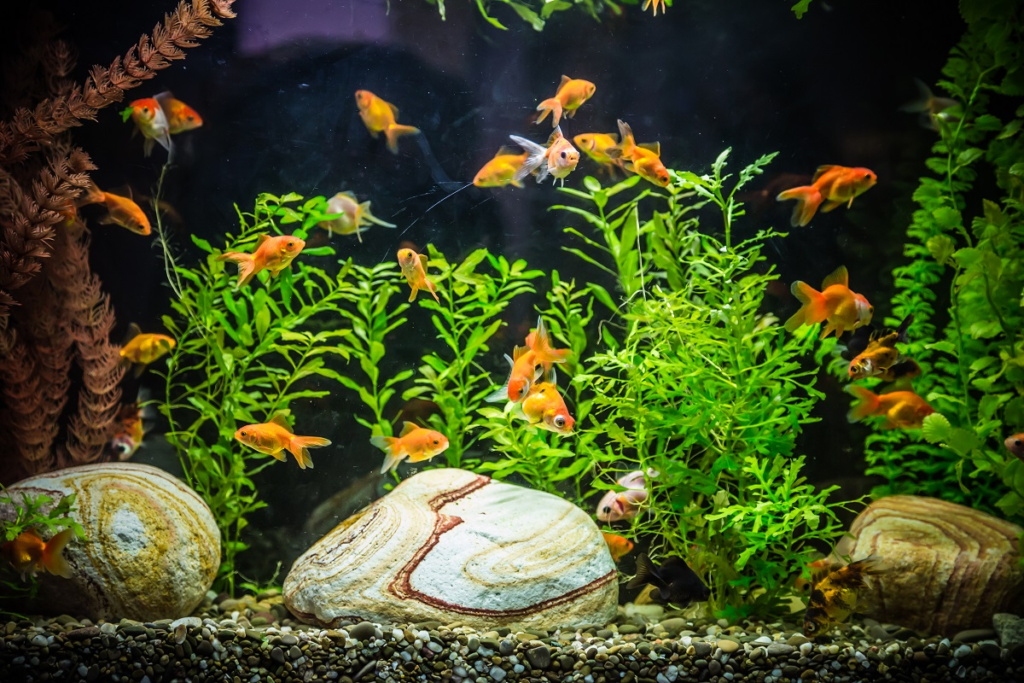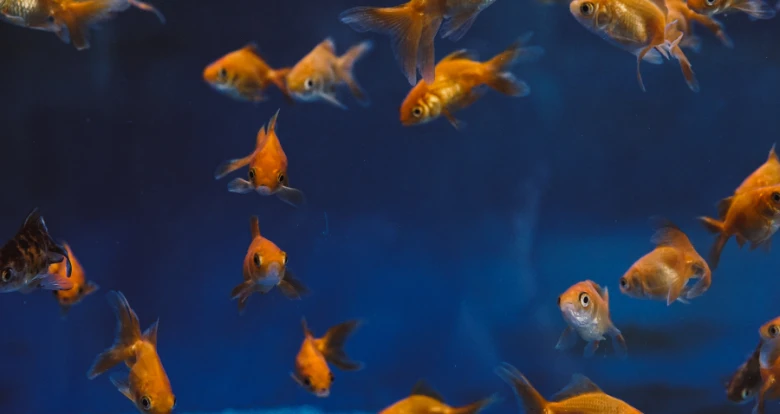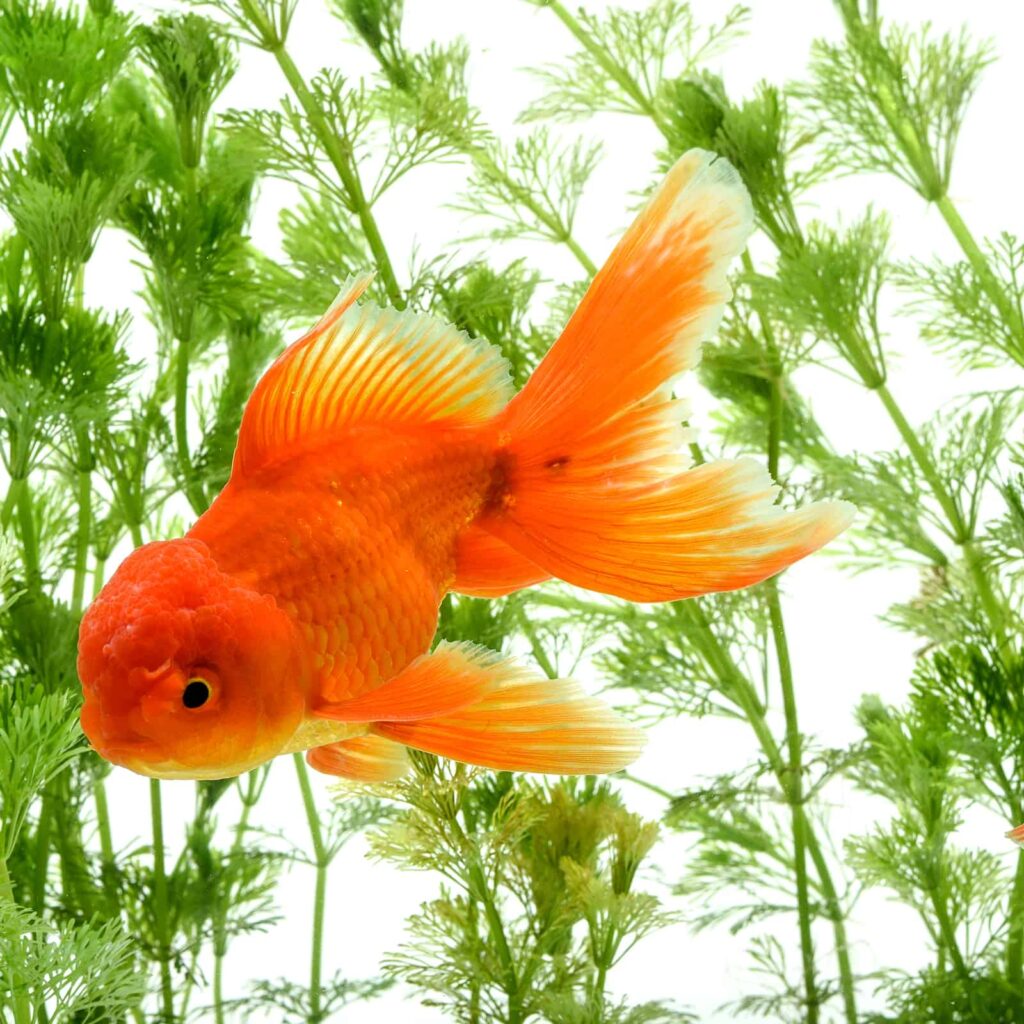
Welcome to the wondrous world of goldfish parenting, where one learns how the tiniest details, like water flora, bigger impact than expected. This guide will show you why your goldfish tank should resemble a miniature underwater forest, especially for those little aquatic babies.
In this journey, we’ll dive into selecting suitable plants considering each goldfish species, their size, and which ones specifically cater to baby goldfish. From setting up the goldfish tank to maintaining your aquatic horticulture, we’ve got you covered. Buckle up, it’s time to turn your goldfish tank into a lush, green haven!
Understanding Goldfish Tanks

So, you’ve decided to become a proud parent of a baby goldfish – congrats! But, hold on there, fish enthusiast, before you make your lil’ fella do laps in his new abode, there are some things you must know.
Why Baby Goldfish Need Plants?
Baby goldfish and plants, they’re like peanut butter and jelly. Plants provide baby goldfish with much-needed security and also an excellent spot to play hide and seek. Plus, they help in maintaining the water quality. Without any swimming-pals to interact with, you wouldn’t want your goldfish to get bored, right?
The Role of Plants in a Goldfish Tank
Now, these plants ain’t mermaids, but they’re equally fascinating. They help in reducing the nitrogen levels in the tank by absorbing nitrites – nasty stuff that can harm your swimming buddy. In tandem, these little oxygen factories also ensure your baby goldfish gets fresh air to breathe underwater.
The Amount of Space Baby Goldfish Require
Then comes the “space” thing. Imagine living in a shoebox – not so fun, right? Similar to us, baby goldfish requires enough space to move freely. Typically, one baby goldfish needs at least 20-30 gallons of water with plenty of room for plants and fun.
Before moving on to selecting the right plants, it’s crucial to ensure that your fish has the appropriate home. For this, take a look at our article, Best Tanks for Baby Goldfish, to choose the perfect tank. Now, let’s move onto selecting suitable plants for your baby goldfish tank.
Choosing the Right Plant Species

Before tossing any green stuff from a pet store into your bubbling goldfish haven, hold your horses! You need to work on selecting the right plant species. “But how do I do that?” I hear you ask. Don’t fret, let’s dive in deeper!
Pros and Cons of Different Plants
Not all plants are minted equal. Some strut their resilience, thriving in whatever conditions you might throw at them. Like the Hornwort, a hardy plant which is almost as tough as myself on a Monday morning after a heavy weekend! However, the flip side is some, like the pretty Water Wisteria, can turn into demanding divas, hassling you for light and nutrients. Net-net, it’s crucial to understand the needs of each plant and match them with what you (and your fish) can offer.
How to Consider Your Goldfish’s Species
Look, my friend, goldfish are not a ‘one size fits all’ deal. Some, like the adorable Shubunkins, enjoy a well-furnished tank with soft-leaved plants. On the other hand, the cute Orandas, with theirs heads sporting a brainy look, are nibblers who might snack down your lush vegetation. Hence, knowing your goldfish species can save both your green stuff and your little swimmer’s happiness.
Size Considerations for Plants
Avoid cramming your tiny tank with monstrous plants, like the Amazon Sword, which can end up leaf-slapping your fish. Instead, opt for compact rhizomes like Anubia, which won’t take up much room. Always remember, your baby goldfish need room to roam, frolic, do the backstroke, and other fishy stuff.
Optimal Plant Species for Baby Goldfish
Wondering what to plant? Duckweed is a fabulous top-layer plant, offering shade and sweetness to tiny goldfish mouths. Plus, it multiplies quicker than you can say, “Bless my goldfish!” Another affordable and adorable choice is Anacharis. This aquatic little gem oxygenates the water, reduces the growth of nasty algae, and serves as a top-notch nibble for your pets. If you want to explore more choices, check out our article on the 10 Best Live Plants for a Goldfish Aquarium.
Now, with plants chosen and equipped to create a lush green haven for your goldfish, let’s proceed to the exciting part – the planting procedure! Ready to immerse your fingers in the aquatic world? Let’s get our fins, I mean, hands dirty!
Setting Up Your Goldfish Tank

Ah, we’ve come this far. In your journey to becoming an exceptional aquatic plant wrangler for your baby goldfish, we now arrive at setup. It’s like interior design—but, you know, underwater.
Positioning Plants Correctly
Finding the perfect spot for your plants isn’t as tough as finding Waldo. But it’s not all about aesthetics. Plants must be away from the filter flow—too much push and pull aren’t their thing. Fast-growing stem plants should at the backside, providing a lush green backdrop. Short, bushy ones get the front row tickets, giving the ‘scape depth. It’s about creating an aquatic utopia your goldfish will adore.
How Many Plants to Put in the Tank
Don’t be the person who crams so much stuff into a small suitcase. Your tank isn’t a jungle; leave some swimming space for your fish. A good rule of thumb: one plant for every 10 gallons of water. If you become overly attached to the idea of an ultra-green utopia, just remember: less is more.
Creating Both Hiding and Play Spaces
Ever played hide and seek? Your goldfish enjoy it too. Leaves and plant stems make excellent hideaways. However, spread those plants out to create some playgrounds. Think of it as a combination of a playground and a treehouse, all under water.
Cleaning Plants Before Placing
Before your plants set foot in their new home, they need a solid scrub down. Bath them in a diluted bleach solution (19 parts water, 1 part bleach) for about 1 minute. Rinse well. This helps remove any hitchhiking pests and diseases. Just imagine when your goldfish realize you’ve created the cleanest, pest-free playground ever. Instant parent of the year vibes.
Now, your plant-placing skills are top-notch. But remember, even the best things require maintenance. It’s solving their problems before they become your goldfish’s problems. Let’s dive right into plant care next.
Maintaining Your Plants

Maintaining your aquatic plants is kinda like doing your hair. Nobody likes frizzy, overgrown locks, and your Goldie’s home needs that same love!
How to Trim Your Plants
Trimming aquarium plants is like giving your tree a chic bob haircut. Scissors will be your buddy here, they should be clean and sharp to cut through the leaves without hurting them. Just like cutting hair, you don’t want to give your plant a lopsided do, so balance is key.
Remember, however, not to over-do it. Cutting off too much at once can stress out your plant, and nobody enjoys a bad hair day!
Alrighty, let’s move onto plant health signals. It’s like your plant whispering to you, asking for more conditioner.
Signs Your Plants Are Healthy
Your plants will shout out signs of their well-being, are you ready to listen? Bright, vibrant color is the equivalent of a plant saying, “I’m feeling fabulous!” If the leaves are lush and green, you’ve nailed it. Providing your plants with the right nutrients, like those found in this high-quality API LEAF ZONE Freshwater Aquarium Plant Fertilizer, can help them maintain their vibrant color and vitality.
Conversely, if they’re losing color or turning brown, it might be time to pump up their care routine. Remember, the goldfish/plant duo are BFFs, if one isn’t doing well, it might affect the other. Keeping the aquarium environment balanced is key, and sometimes supplementing with a plant fertilizer can be part of the solution.
Before we move on, let’s crack the code on dealing with the inevitable nasties that might pop up. Yikes! Plant diseases.
How to Deal with Plant Diseases
It’s like ‘Chicken Little,’ but instead of the sky falling, it’s your plants crying out for help. Common culprits include algae and plant rot, which can be managed by adjusting tank conditions and plant treatments.
If you sense your plants seems sicker than a hungover frat boy, consider consulting an aquatic plant specialist. Often, though, with a bit of love and care, your plants can bounce back stronger than a 90s fashion trend.
Now that we’ve covered the upkeeping, let’s dive into some handy tips to keep your goldfish loving their green buddies even more.
Additional Tips

First, let’s talk extra credit. Cohabitation between goldfish and their leafy roommates can be quite the soap opera, if you know what to look, or eh… swim for.
Monitoring Goldfish Behavior with Plants
You might find Goldie nuzzling its plant pals one day, and uprooting them in a riotous rage the next. Plants are not only tank props. They are confidantes, playmates, and sometimes adversaries in the bubbly world of goldfish. Monitor how your goldfish interacts with the plants — it’s not just fun, it’s important for their health and happiness.
Replacing Plants
Over time, if plants deteriorate or don’t look as fresh as they used to, don’t feel bad about replacing them. It’s not you; it’s the lifecycle of a plant! Change is part of the circle of life (cue the Lion King theme) and a way to keep the aquarium ecosystem thriving.
When to Introduce New Plant Species
Feel audacious? Try introducing new species into the tank. But remember, just like Aunt Sally doesn’t get along with Cousin Bob at family gatherings, your goldfish may shun some newcomers. So, introduce slowly, and watch reaction before painting the tank flora with diverse shades of green.
Right, now that we’ve essentially turned you into a certified aquatic horticulturalist (just go with it), let’s take a moment to recap and review the big takeaways from our plant-buying guide for your baby goldfish.
Stay tuned! We’re almost at the end of our amusingly informative voyage through aquatic greenery.
Wrap Up
In wrapping up, remembering the importance of a well-equipped goldfish tank, notably for baby goldfish, is key. Outlining the role of plants in these tanks brings to light their significance as more than mere aesthetic, but as facilitators of healthier living spaces for fish.
Choosing the right plant species is crucial given the unique pros and cons varying species introduce. Setting up the goldfish tank efficiently, ensuring plants are well-positioned and cleaned, and designing a balance between hideouts and play spaces meshes greatly with routine plant maintenance. Be alert to plant health culminating to an environment conducive for goldfish growth.
As an addition, pay attention to your goldfish behavior relative to their green companions and replace plants when necessary. When you feel like spicing things up, introducing new plant species could offer an exciting twist for your finned friends. And remember, a happy goldfish means a happy aquarium owner, too!
Frequently Asked Questions (FAQ)
Question: Why do baby goldfish need plants in their tank?
Answer: Plants provide shelter, cleaner water through absorption of toxins, and a natural, stress-relieving environment for baby goldfish.
Question: What are the factors to consider when choosing plants for a goldfish tank?
Answer: Consider the goldfish species, the size of the tank and fish, the plant’s growth rate, and the plant species’ compatibility with goldfish.
Question: How many plants should I put in a baby goldfish tank?
Answer: The number of plants varies on the tank size and your goldfish species. However, provide enough for shelter but ensure there’s enough space for your goldfish to swim.
Question: How to maintain plants in a goldfish tank?
Answer: Regular trimming helps, watch for color change or any signs of disease. Faded or torn leaves can indicate an unhealthy plant.
Question: How frequently should I clean or replace the plants in my baby goldfish tank?
Answer: Clean and inspect them every time you clean the tank. Replace them if you notice signs of disease or if they’ve outgrown the tank.
Question: When should I introduce a new plant species into the tank?
Answer: New plants can be added when the tank is fully cycled and the current plants are healthy. Make sure to acclimatize the new plant before adding it.
